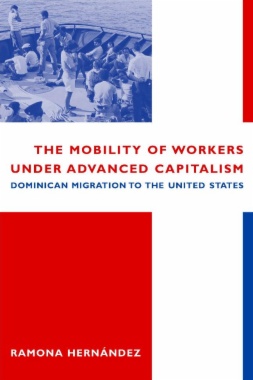What explains the international mobility of workers from developing to advanced societies? Why do workers move from one region to another? Theoretically, the supply of workers in a given region and the demand for them in another account for the international mobility of laborers. Job seekers from less developed regions migrate to more advanced countries where technological and productive transformations have produced a shortage of laborers. Using the Dominican labor force in New York as a case study, Ramona Hernández challenges this presumption of a straightforward relationship between supply and demand in the job markets of the receiving society. She contends that the traditional correlation between migration and economic progress does not always hold true. Once transplanted in New York City, Hernández shows, Dominicans have faced economic hardship as the result of high levels of unemployment and underemployment and the reality of a changing labor market that increasingly requires workers with skills and training they do not have. Rather than responding to a demand in the labor market, emigration from the Dominican Republic was the result of a de facto government policy encouraging poor and jobless people to leave—a policy in which the United States was an accomplice because the policy suited its economic and political interests in the region.
- Contents
- Tables
- Acknowledgments
- INTRODUCTION
- The Mobility of Labor in Response to Demand
- An Alternative Reading of Labor Mobility
- The Changing Economy: No Need For Extra Hands
- Emigration as an Expulsion of Workers
- Life in the Metropolis
- [ PART 1 ] Leaving the Land of the Few
- 1. THE GREAT EXODUS: ITS ROOTS
- Explaining Dominican Migration
- The Middle Class and the Urban Background: Deconstruction of a False Identity
- The Making of a Migratory Movement: An Alternative Reading
- The United States, the Rise of Balaguer, and the Circulation of Capital and Workers
- The Politics of Stability: Family Planning and Emigration
- 2. ECONOMIC GROWTH AND SURPLUS POPULATION
- The Road to Modernization: Import Substitution
- The Cattle-Agricultural Sector
- Urban Centers and the Mobility of Surplus Labor
- Economic Rearticulation in Search of Accumulation
- The Reproduction of Labor Power and Surplus Labor: The Antecedent to Emigration
- Economic Accumulation and Crisis
- Public Spending
- A General Assessment of Migrants and Migration from the Dominican Republic
- [ PART 2 ] Settling in the Land of Dreams
- 3. THE PERCEPTION OF A MIGRATORY MOVEMENT
- Hard Work, High Poverty: Life in the Metropolis
- The Head of the Household: A Woman’s Story
- The Washington Heights Dominican Community: The Construction of an Image
- The Untold Story:The Other Face of a Community
- Marginalization and Poverty Among Dominicans: An Assessment
- 4. DOMINICANS IN THE LABOR MARKET
- Dominicans as Workers in New York City
- The Larger Economic Picture
- The Restructuring of the Economy: A Theory of Job Creation
- Industrial Distribution of Dominican Labor Force
- Occupational Distribution
- Earnings
- Labor Force Participation Rates and Unemployment
- Explaining Labor Market Differentiations
- Poor Labor Market Outcomes Among Dominicans: Current Explanations
- Toward an Alternative Explanation Concerning Labor Market Outcomes Among Dominicans
- The Limits of Demand
- 5. ON THE INTERNATIONAL MOBILITY OF LABOR
- Labor Mobility and Demand
- Migration and Declining Labor Demand at the Core
- Looking for More Than Just Human Capital Qualities
- In Sum, the Restructuring of the Economy: No Need for Extra Hands
- Contesting and Controlling Mass Immigration in the Land of Opportunities
- Surplus Here, Surplus There, Surplus Everywhere: Displaced Workers and the State
- 6. CONCLUSION: ASSESSING THE PRESENT AND AUGURING THE FUTURE
- The United States
- The Dominican Republic
- The Dominican People
- APPENDIX: FIGURES
- Notes
- Works Cited
- Index

